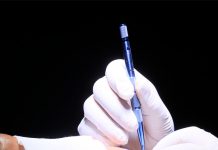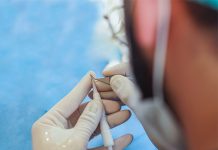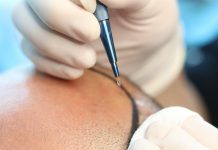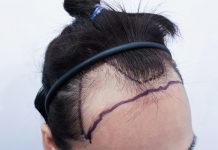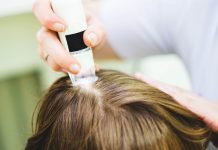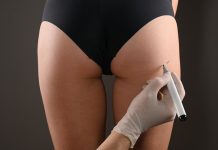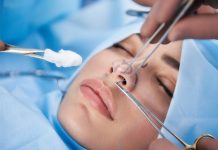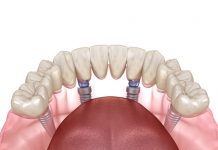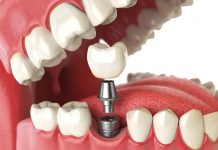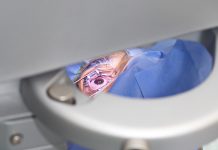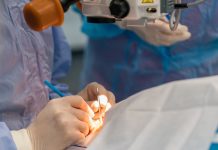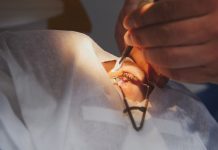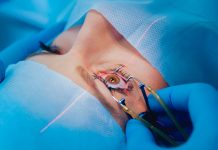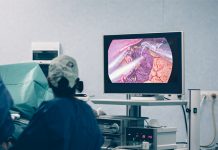Unshaven Hair Transplant
Unshaven hair transplant in Turkey, its average cost, Unshaven FUE or DHI transplantation methods and all you should know about hair growth are explained.
What Is Unshaven Hair Transplant?
Unshaven Hair Transplant, also known as Unshaven FUE or DHI Hair Transplant, is a hair implantation technique for the ones who are not willing to shave all or some of their hair. These hair transplants usually cost between £600 – £12,000. Unshaven FUE or DHI results mostly last for a lifetime if the procedure is successful.
People love their hair. It is indeed one of the most obvious facts about us human beings. We pay attention to our social standings, our reputation among society, and inevitably, we also value our appearance. As a result, the condition of our hair also carries vital importance when it comes to our confidence and self-esteem. If we start losing our hair, we may consider thinking about our options for treatment, including Hair transplantation surgeries. Ironically, however, we also must lose a great deal of our hair for those types of treatments to be applied. Usually, all patients have to shave their heads before such an operation. It might be mentally challenging for most of the patients to shave their heads and go through a phase of post-operative recovery.
It always takes time to see the full results of hair transplantation surgeries. In such a case, for the applicants, shaving their head and waiting for nearly a year to see if their surgery gone well may sound appalling. It is not even abnormal to encounter patients who change their minds when they hear that they will have to shave their hair off prior to surgery. Patients are not willing to shave their heads. There are several reasons to this.
For instance, women who have long hair might find this experience somehow a traumatic one. Even if they come to terms with shaving their heads, they might stress over the fact that their surgery scars will be visible due to the shorter hair. Not being able to conceal surgery scars might cause anxiety as well as mental damage. Moreover, if the patient’s job requires a representative persona, things tend to get much complicated then.
Nevertheless, the advancements in Unshaven hair transplant methods never cease to satisfy those who seek treatment. In addition to hair implantation procedures that require a fully shaved scalp, patients are now able to choose between four options for shaving:
- The entire head – donor and recipient sites included
- only the donor site
- Only a small area at the back of the head, which is going to be undetectable
- A complete surgery without shaving also named “Unshaved Session”.
Of all these methods, the fully shaved hair transplantation is the most applied one. For a fully shaven session, both the donor and the recipient areas are expected to be shaved whereas, for the second technique, the patient shaves only the donor area of the scalp. The last two options, however, lead the way to the complete unshaven session. Both of these options are named “Unshaved Hair Transplant Methods.”
As to the first technique, the scalp is partially shaved. The reason they call this an “Unshaved session” is that the shaved area will be so small that it is going to be undetectable. In the second method, which is also called an unshaved hair transplant, the main goal is to conduct the operation with a completely unshaven scalp. For this procedure to be applied, the shaving of the donor area is totally eliminated. Hence, the hair there remains intact. In the following paragraphs, we are going to be explaining those two methods under the title of unshaven hair transplantation.
Partially Shaved Hair Transplantation
If you have longer hair and require roughly 2800 grafts or less, it might indicate the fact that you are a good candidate for a “partially shaved” session. During the procedure, which is also known as “Linear Shaved Session”, a small line or a small rectangular area is shaved at the back of the patient’s head. This is conducted in such a way that the remaining hair above falls upon the shaven area and thus conceals it. Since coverage is an important aspect of this technique, your doctor may recommend growing your hair at least 6-7 centimetres long prior to the surgery.
This operation is not suitable for patients who have a wide recipient area. It is usually recommended to patients who want hair on the front parts of their head. The rate of hair-loss must also be moderate or less.
If the patient wants more than 3000 grafts to be placed on the recipient area, then the shaving process is a must.
Pros and Cons of Partially Shaven Hair Transplants
Pros:
- You can preserve your original hair with the same style as well as the same length, both during and after the procedure.
- Your privacy is going to be protected because you will be able to go back to work in a short time. Moreover, your scars will not be revealingly visible. You are going to be able to hide them under your remaining hair.
- Your overall healing frame will most probably be shorter due to the number of grafts that are transplanted. They are going to be fewer in number.
- Scabs and crusts in the donor area will not be visible.
Cons:
- This operation can only be conducted on people who have long hair.
- The number of grafts that can be taken from the donor area are limited to a maximum of 2500-3000 follicular units.
- In one session, the number of follicular units that can be extracted is relatively less.
- You may need to attend several sessions to achieve your desired results. Nevertheless, there must be at least 6 months between those sessions.
- Overharvesting remains as a risk since the donor area is chosen as a small region on your scalp.
- The cost of this surgery is higher than the other techniques.
Complete Unshaved Hair Transplant
If your hair is relatively weak and your hair loss is limited to the anterior regions of your scalp, then your doctor might think of performing the procedure between the hair strands. This is usually the case for the ones who need approximately 1000 or fewer follicular units to cover their lost hair. If these conditions are being fulfilled, your doctor might perform a complete unshaven hair transplant session on you.
During this method, the deed of extraction from the donor site is performed with a round-tipped rotary punch. It rotates around the hair follicles; it draws a full 360-degree cycle at the moment of penetration. By doing so, it aims to separate the follicle from all of its tissue attachments. The hair that is bound to the follicle remains at its normal size during the extraction. After it is taken out, the hair is cut down to its root.
After these grafts are collected in a place, the implantation phase begins. Grafts are, then, implanted into the balding and thinning areas via an implanter pen. As it is the case for all hair transplantation patients, you will still be experiencing a shock loss, which is also temporary. After you experience such a loss, new hair will start to regrow in the balding areas. If you want to keep your hair loss and transplantation as a private matter, complete unshaven hair transplant or partially shaven implantation procedures are just for you.
Since these procedures are applied on an unshaven or on a completely shaven head, which has hair on, your doctor’s skill carries the utmost importance. Normally, doctors want you to shave your hair prior to the procedure because it enables them to see the hair follicles with a clear view. For such an unshaven hair transplant surgery, the doctor you choose must be an experienced, skillful and diligent surgeon.
Pros and Cons of Completely Unshaven Hair Transplant
Pros:
- You absolutely do not need to shave your hair in any way.
- You are again required to have longer hair but this allowed length can recede up to a scale shorter than 6-7 centimeters.
- Scabs and crusts will nearly be impossible to detect.
- The overall recovery period is shorter due to the fact that the number of grafts that are going to be transplanted is fewer. In fact, it has one of the shorter recovery periods among all techniques.
- You do not have to worry about shaving your entire head. Female patients, especially, find this fact as a huge relief.
- Transplanted follicles align with the texture and the feature of existing hair follicles.
- Unshaven hair transplant is an excellent technique for patients who wish to hide scars.
- Due to the use of local anaesthesia, you will not feel any pain.
- It provides one of the most natural-looking results.
Cons:
- This procedure requires intensive labour, focus, attention and a diligent procedure. In order to perform such a surgery, your doctor must have gone through excessive training, experience and he/she must possess the required skills.
- Although you can get a pre-look after the unshaven hair transplant surgery, the implanted area will start shedding off the transplanted grafts. This is called shock loss, it usually happens between the 2nd and the 4th weeks following the surgery. It is, however, completely normal.
- If your unshaven hair transplant session is performed as DHI, it might take longer to finish off compared to the other methods.
- In addition to this, DHI is a little bit more expensive due to the intensive labour it requires.
Where to Start to Have Unshaven Hair Transplant?
If you have decided on having a hair transplantation surgery, then you must start searching for a decent clinic to go under the knife. Once you find your clinic after meticulous research on their previous patients, you are expected to book an initial consultation appointment to initiate the process. During your consultation appointment, your hair will be analysed and your doctor will inform you about the procedure. He/she might demand:
- Your full medical account.
- The medications you have recently used or the ones you are currently using.
- The herbal remedies, herbal supplements or herbal teas you might have recently metabolised.
- Your addictions like smoking or alcohol – It is highly recommended that you quit smoking or alcohol at least 6 weeks before and after the procedure. These addictions put your recovery phase in danger by slowing down your healing time frame. They also increase your risk of catching infections or developing complications during and after the surgery. To make a long story short, smoking and alcohol prevent you from having a safe surgery.
Recovery from Unshaven Hair Transplant
After the unshaven hair transplant surgery, your scalp is going to be extremely tender to the touch. You may observe a minor swelling that might last for 2 days. Your doctor will make you wear bandages on your head for nearly a day. You might feel pain or soreness in your processed areas. In order to avoid excessive swelling, pain, and other possible conditions, your doctor might prescribe you medications like pain killers, antibiotics, and anti-inflammatory drugs.
After a few days following the unshaven hair transplant procedure, you might observe small alterations in the outline areas of your hair. It might manifest itself with little swelling but no worries! It is not really important. This pain and tenderness are certainly temporary. Your doctor will also inform you on the issue of washing your hair and scalp in a safe manner. He/she might recommend sleeping with an elevated pillow. After a week, you can safely wash your hair with the shampoo that your doctor has prescribed and you can towel-dry gently.
The incisions and scars will be completely healed in about 7 to 10 days after the unshaven hair transplant. After this period passes, you can take a bath and return to most of your daily routine. As for the donor area, you might notice small scabs. You must not scratch these scabs under any circumstances. It is vitally important that you avoid touching and itching them. They need to fall of themselves in about a week. You can follow these instructions in order to speed up your post-operative healing process:
- Avoid brushing or combing your hair in a rough manner for 3-4 weeks.
- Do not wear hats or hoodies until your doctor says the opposite.
- Stop exercising and strenuous physical activities for a couple of weeks.
- Have an ice pack nearby to reduce the swelling.
- Avoid extreme heat, cold or sunlight.
- Rest well and be gentle with your scalp.
- Do not drink alcohol or smoke at least for a month. These things will interfere with the blood flow to the head and consequently they will slow your healing process. They might also cause complications.
Possible Risks and Complications
Unshaven hair transplant is a completely safe procedure. However, with every surgery, there remains a certain risk of developing complications. Most of those risks are preventable with the right choice of doctor and surgical techniques. Yet, the patient also plays and active role in this. Following the instructions of your doctor and loyally sticking to them will lower, and even destroy, your chances of catching those complications. The most common risks and complications can be listed as below (you should keep in mind that all of these tend to be minor and temporary):
- Infections.
- Pain in the scalp.
- Itching.
- Swelling.
- Folliculitis – Inflammation or the infection of hair follicles.
- Bleeding, which is preventable with a little pressure.
- Loss of sensation and numbness around the processed area.
- Thinning areas of hair.
- Hair loss (also known as Shock Loss, which is really common).
- Hair growth that is unnatural or patchy in shape.
- Low density of hair.
- Necrosis.
- Cysts that generally disappear within weeks.
- Overharvesting.
- Acute effluvium.
- Hypopigmentation.
Frequently Asked Questions About Unshaven Hair Transplant
How long does the unshaven hair transplant take?
The length of the operation might take between 5 and 8 hours. It usually takes up lesser time since the number of grafts that are going to be implanted will be fewer.
What kind of anaesthesia will they use on me? Will it be painful?
Usually, doctors prefer using local anaesthesia on the scalp. However, if you are extremely anxious, your doctor might provide you with relaxing medications. Most patients do not report feeling painful or uncomfortable.
Will I need a stay?
No. You are not going to need to stay in the clinic or in hospital. You can go back home on the same day of unshaven hair transplant surgery. However, it is highly recommended that you arrange for a friend or a family member in advance to drive you home and help you in the first 24 hours following the surgery.
When can I go back to work?
You can go back to work after 2 days. Your scars will not be visible and most of the swelling is expected to be gone during this period. Therefore, no one will suspect you having unshaven hair transplant. Yet, if your work requires intensive physical effort, this time is going to extend into a longer period.
How long will my results last?
Hair transplantation lasts for a lifetime and unshaven hair transplant too. You have a life time warranty once you go under hair implantation surgery. At first, you are going to experience shock loss. This might happen between the 2nd and the 4th weeks following the surgery. After that, new hair will start growing and you are going to start seeing your results.
When will I see my complete results?
In all hair transplantation procedures, patients are able to observe their full results after nearly a year. After 6 months, you are going to start to notice changes and after a year your hair will go back to its healthy and shinier days. Nevertheless, in some cases you might need to have two sessions of transplantation. This is totally due to the nature of unshaven hair transplantation. The hair grafts that can be extracted from the donor area are limited, so it makes it harder to achieve what you want in a single session. There must be at least 6 months between each surgery, so your results might show up differently in accordance with this.
Will my scars be visible?
No. People are not going to be able to see your scars. They will be hidden under the coverage of your long hair. They will not know that you have had a hair transplantation surgery unless you tell them.
How much does it cost to have unshaven hair transplant?
The general prices may show variance in accordance with your region, your clinic and your doctor’s experience. Operation prices for this method usually change due to intensive labour and due to the time which is required more than any of the procedures. Longer operation time, intensive labour and the success rate affects the price of this surgery. It costs more than average hair transplantation.
Is this method as successful as other hair transplantation techniques?
Unshaven hair transplant surgeries are as effective as other methods in general. Nearly all of the unshaven hair implantations result in success.
Am I a good candidate for having unshaven hair transplant?
This is a method mostly preferred by doctors whose patients suffer from hair loss in the front lines and temple areas of the scalp. Experience and expertise carries vital importance. You should contact your doctor’s office and arrange for a meeting to determine whether you are a suitable candidate or not. However, your hair must be at least 6 or 7 centimetres in lengths to undergo such a procedure. Otherwise your scars will be visible and the procedure will have no difference.
Why is hair shaved for other procedures? What is the importance of it?
For normal hair transplantation procedures, shaving the hair is vitally important from many aspects. First thing first, your surgeon and his team will be able to see your follicles with a clearer view and they will work more easily. It gives them more mobility on the processed area. Shaving the excess hair around donor and recipient sites also provide hygiene. Therefore, it lowers the chances of infection and complications.
What is the difference between shaven and unshaven hair transplant?
Unshaven hair transplant method is usually for the ones who have not yet lost a great deal of their hair. It is more applicable to patients who suffer from hair loss only on some parts of their heads. Nonetheless, if the patient has lost a great part of their hair; then it is mandatory to shave the scalp prior to the surgery.
What method is used for these hair transplants?
Doctors usually prefer FUE (Follicular Unit Extraction) method for unshaven hair transplant. It is not even painful and it is invasive on a minimal scale. There will not be any scars and this can be applied to both shaven and unshaven scalps. It is the most popular hair transplantation technique of this era. However, unshaven hair transplantation can also be conducted with the DHI (Direct Hair Implantation) method. This is exactly the same method as FUE. The only difference is the pen your doctor uses during the surgery. They use a Choi Pen instead of a regular one to insert the grafts that have been harvested.


